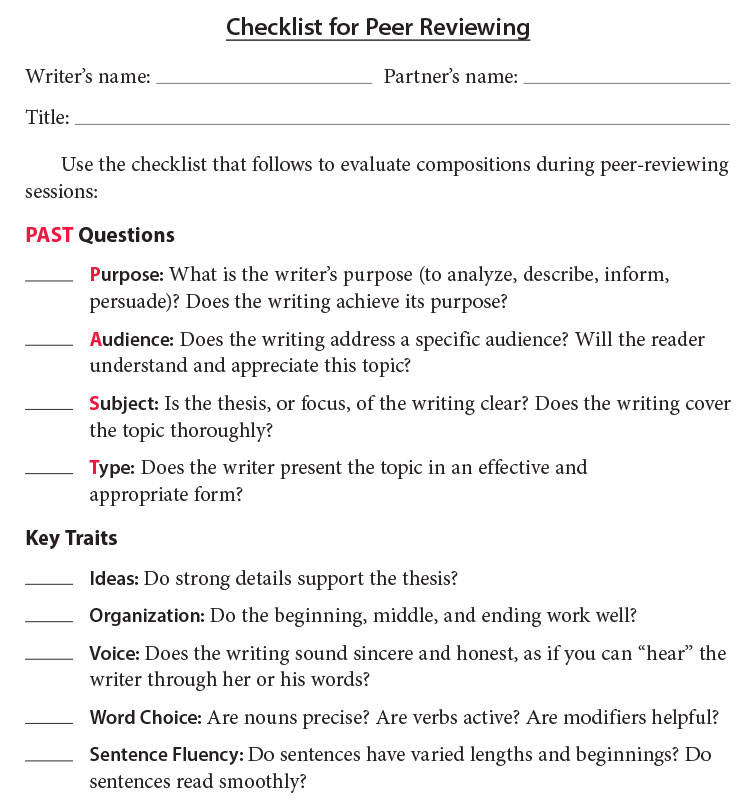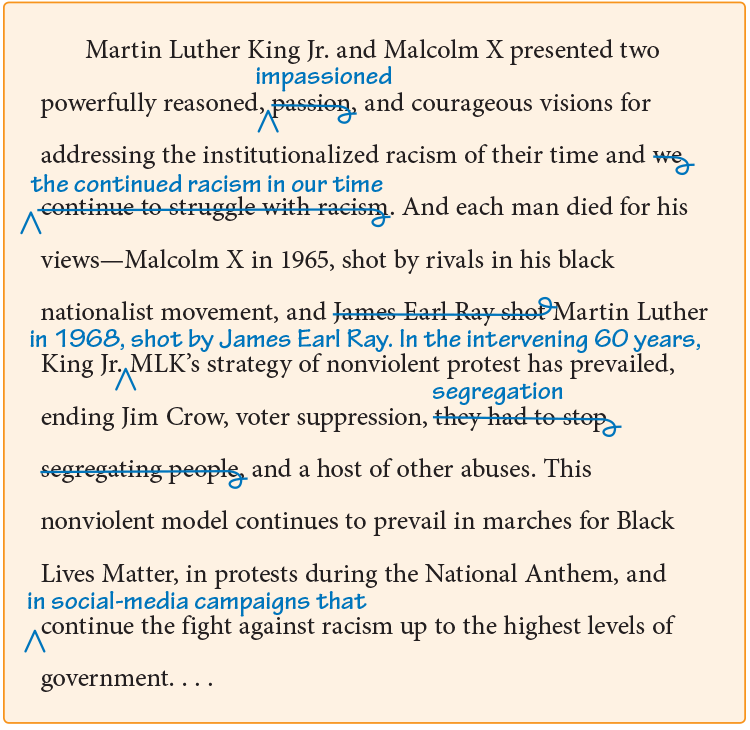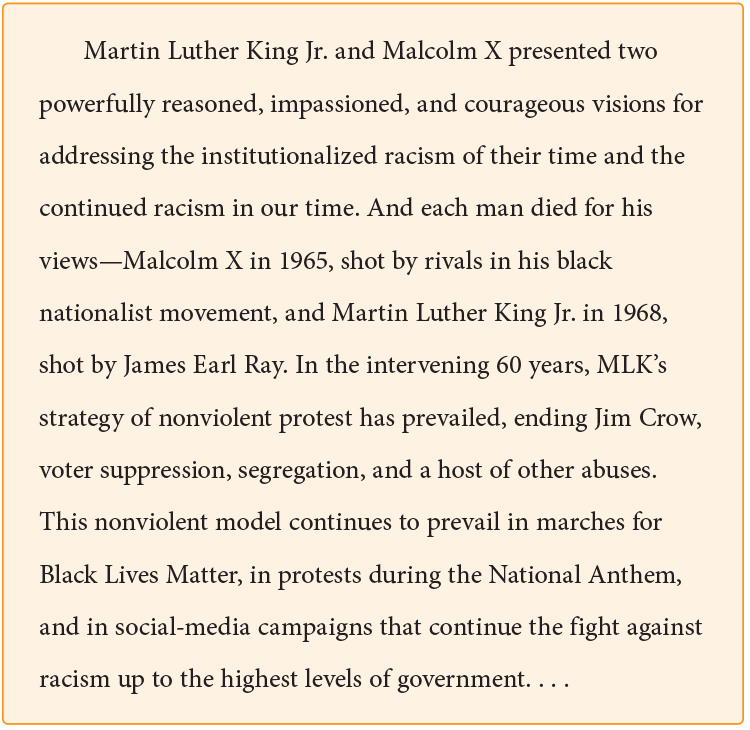Revising Comparison-Contrast Essays
Drafting is done! You've bootstrapped yourself from having no idea what to write about to having a complete essay in its initial form. Congratulations! Writers often find prewriting and drafting to be the most challenging steps because they have to start with a blank page. Now you have a full page or more, so the work from here on out should be easier.
Even so, other writers hate revising and editing. They feel like they have an essay and should be done. Also, they don't know how to make major improvements (revisions) let alone specific corrections (editing). If you are one of those writers, don't despair. The activities in this lesson plan and the next will guide you.
Revising for Parallel Structure
Parallel structure means presenting equal ideas using the same grammatical form. If you have a paragraph defining and explaining one topic, you should have a paragraph defining and explaining the other. If you have a sentence presenting one point of comparison for one topic, you should have a sentence presenting the same point of comparison for the other topic. Parallel structure even gets down to the level of using phrases or words.
You can think of parallel structure like a teeter-totter. The idea on one side needs to balance the idea on the other side. The fulcrum (pivot) of the teeter-totter is often the word and, but, or or.
Parallel Words
Both Martin Luther King Jr. and Malcolm X agreed about the cause of racism and injustice.
Nonparallel Words
Both Martin Luther King Jr. and "Message to the Grassroots" agreed about the cause of racism and people weren't receiving justice.
The parallel example pairs a name with a name and a noun with a noun. The grammatical form shows readers that these ideas are equal. The nonparallel example pairs a name with a speech title and a noun with a clause. The shifts in grammatical form leave readers confused.
Parallel Clauses
People with Asperger's syndrome have mild disabilities combined with strong intellectual talents, but people with savant syndrome have profound disabilities combined with "islands of genius."
Nonparallel Clauses
People with Asperger's syndrome have mild disabilities combined with strong intellectual talents, but when a savant has uncanny talents.
The parallel example pairs two independent clauses (complete sentences), each using the same structure ("People with . . . have . . . combined with . . ."). The nonparallel example pairs an independent clause with a dependent clause (incomplete thought), thereby creating confusion. What happens when a savant has uncanny talents?
When you connect three or more ideas with an and or or, each idea must have the same grammatical structure to create a parallel series.
Parallel Series
These "islands of genius" include calendar calculation, musical mimicry, and eidetic memory.
Nonparallel Series
These "islands of genius" include calendar calculation, musical mimicry, and they can draw complex maps from memory.
The parallel series connects three nouns, each with a modifier. The nonparallel series starts with the same pattern but shifts to an independent clause. This series is confusing and grammatically incorrect.
Correct nonparallel structure.
Rework each sentence below to make nonparallel elements parallel. Watch for ideas joined by and, but, or or. Make a copy of this Google doc or download a Word template.
-
I wish I could have heard Martin Luther King or Malcolm X.the "Message to the Grassroots."
-
Martin Luther King called all people to live together in peace, justice, and lovewe should live together in love.
-
Malcolm X called for revolution and bloodshedbloody.
-
King tried to stand between those who do nothing and those who believe in black nationalism when they are black nationalists.
-
King dreamed of a day when people would be judged not by the color of their skin but by the content of their charactertheir character content was what they were judged by.
-
Both Asperger's syndrome and savant syndromesavants are challenging.
-
Those with Asperger's syndrome often excel in math, science, or historythey are interested in history.
-
People with Asperger's syndrome have mild social impairment and high IQ pretty smart.
-
People with savant syndrome have serious impairment but amazing abilitiesamazing.
-
Not all people on the autism spectrum have savant abilities, and not all people with savant abilities have autismautism with not all people with savant abilities.
Review for parallel structure.
Reread your essay, paying close attention to the grammatical structures you use to present ideas. Make sure equal ideas have the same grammatical structure. Rewrite parts as needed.
Revising to Improve Transitions
Transition words and phrases can also help you sort out comparisons and contrasts. These words signal the kinds of ideas that you are presenting at a given moment.
Comparisons
also
another way
as
as well as
both
each
in the same way
in like manner
just as
like
likewise
much as
one way
similarly
so too
too
Contrasts
although
but
by contrast
conversely
even though
however
not
on the other hand
other
otherwise
rather
still
unlike
whereas
while
yet
Of course, you probably did more than just compare and contrast. The two sample essays also explored causes and effects, indicated chronology (time order), and signaled additional information. You can do so with other transition words and phrases.
Causes and Effects
after
as
as a result
as long as
because of
due to
from that
given that
if . . . then
in case
in order to
owing to
provided that
since
so as to
so that
subsequently
when
whenever
while
Chronology
about
after
as soon as
at
before
during
finally
first
in the end
later
meanwhile
next
second
soon
then
to begin
today
tomorrow
until
yesterday
Additional Information
additionally
again
along with
also
and
another
as well
besides
finally
for example
for instance
in addition
moreover
next
other
indeed
Revise for transitions.
Reread your draft, noting places that lack flow. Decide what kind of information you are presenting (comparisons/contrasts, causes/effects, chronology, or additional information) and experiment with transitions that could improve the flow. If no transition would work, consider moving the detail to a more logical spot or deleting it altogether.
Teaching Tip
In addition to improving flow, transitions help students focus on the types of details they are sharing. Deciding what transition works in a given situation requires the student to analyze why they are sharing a specific piece of information. In this way, transitions teach the metacognitive skill of analyzing purpose in writing.
Revising with a Peer Response
Share your writing.
Have a trusted classmate read your comparison-contrast essay and complete the form. Make a copy of this Google doc or download a Word template.

Revising in Action
When you revise, you add, delete, rewrite, and rearrange your writing to make it clearer. Here are some revisions to "Two Roads to Freedom."
Revise with a checklist.
As you revise your comparison-contrast essay, ask yourself the questions on this checklist. When you can answer a question yes, check it off. Continue revising until all questions are checked off. Make a copy of this Google doc or download a Word template.
- Does the essay focus on two interesting topics, showing their similarities and differences?
- Does the essay include a variety of effective details: definitions, examples, explanations, anecdotes, quotations, and so on?
- Are the details well organized, with transitions that signal the types of details being shared?
- Does the voice connect to the reader and show real interest in the topics?
- Are nouns specific, verbs active, and modifiers vivid?
- Do sentences read smoothly and vary in lengths and beginnings?
- Does the reader feel enlightened by the analysis of the two topics?


